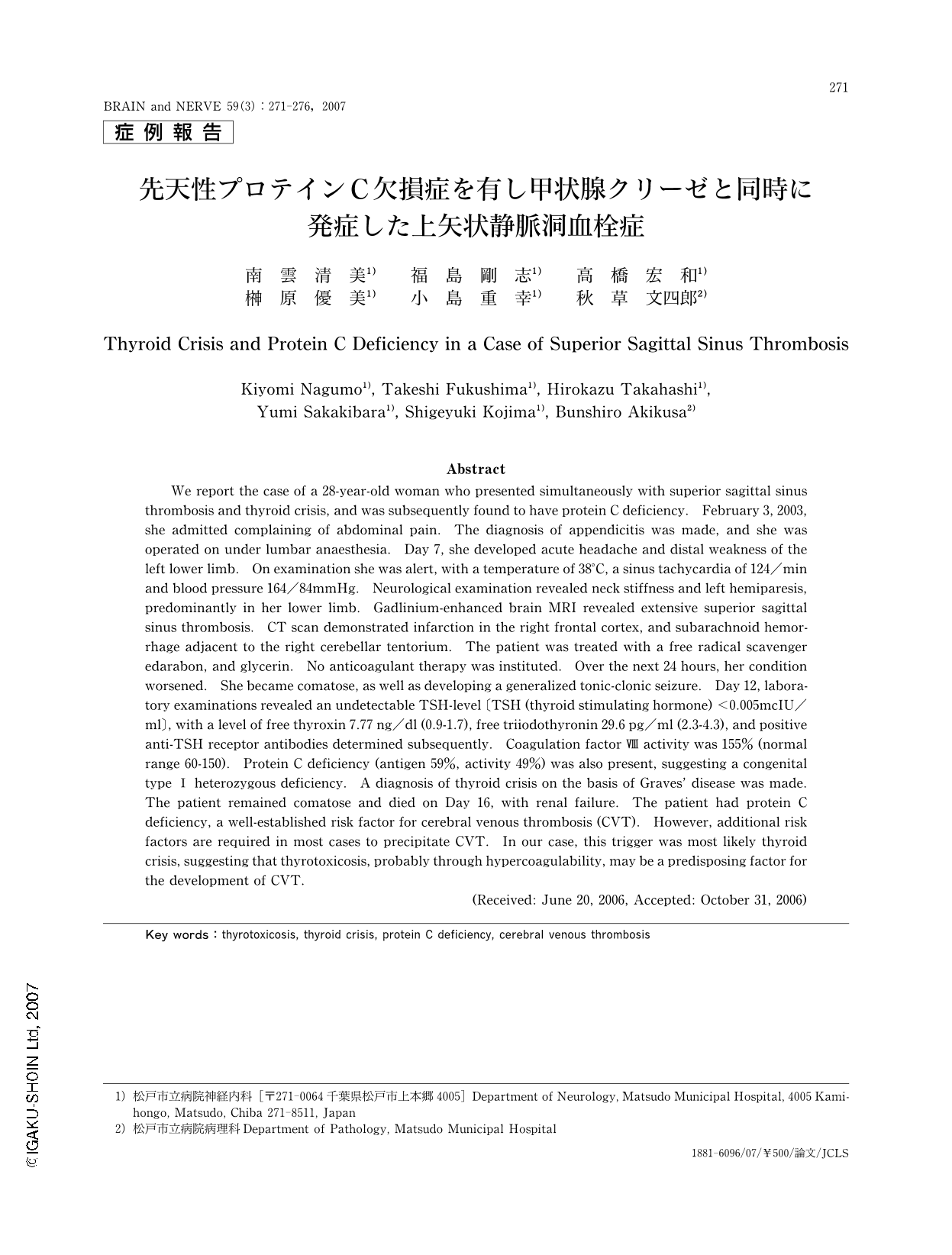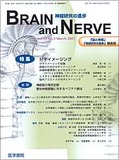Japanese
English
- 有料閲覧
- Abstract 文献概要
- 1ページ目 Look Inside
- 参考文献 Reference
はじめに
脳静脈血栓症の原因として,頭蓋内・外の感染症,血液凝固異常,ベーチェット病や潰瘍性大腸炎などの炎症性疾患,悪性腫瘍,経口避妊薬を含むホルモン異常,外傷などが知られている。われわれは若年女性で虫垂炎の術後6日に,頻脈,血圧上昇,発汗,発熱などの甲状腺中毒症状出現と同時に,上矢状静脈洞血栓症を発症した症例を経験した。本例の脳静脈洞血栓症は,甲状腺中毒症が発症原因の1つと考えられたため報告する。
Abstract
We report the case of a 28-year-old woman who presented simultaneously with superior sagittal sinus thrombosis and thyroid crisis, and was subsequently found to have protein C deficiency. February 3,2003, she admitted complaining of abdominal pain. The diagnosis of appendicitis was made, and she was operated on under lumbar anaesthesia. Day 7, she developed acute headache and distal weakness of the left lower limb. On examination she was alert,with a temperature of 38℃,a sinus tachycardia of 124/min and blood pressure 164/84mmHg. Neurological examination revealed neck stiffness and left hemiparesis, predominantly in her lower limb. Gadlinium-enhanced brain MRI revealed extensive superior sagittal sinus thrombosis. CT scan demonstrated infarction in the right frontal cortex, and subarachnoid hemorrhage adjacent to the right cerebellar tentorium. The patient was treated with a free radical scavenger edarabon, and glycerin. No anticoagulant therapy was instituted. Over the next 24 hours, her condition worsened. She became comatose,as well as developing a generalized tonic-clonic seizure. Day 12,laboratory examinations revealed an undetectable TSH-level〔TSH (thyroid stimulating hormone)<0.005mcIU/ ml〕,with a level of free thyroxin 7.77 ng/dl(0.9-1.7),free triiodothyronin 29.6 pg/ml(2.3-4.3),and positive anti-TSH receptor antibodies determined subsequently. Coagulation factor VIII activity was 155% (normal range 60-150). Protein C deficiency (antigen 59%, activity 49%) was also present, suggesting a congenital type I heterozygous deficiency. A diagnosis of thyroid crisis on the basis of Graves’disease was made. The patient remained comatose and died on Day 16, with renal failure. The patient had protein C deficiency, a well-established risk factor for cerebral venous thrombosis (CVT). However, additional risk factors are required in most cases to precipitate CVT. In our case, this trigger was most likely thyroid crisis,suggesting that thyrotoxicosis,probably through hypercoagulability,may be a predisposing factor for the development of CVT.

Copyright © 2007, Igaku-Shoin Ltd. All rights reserved.


